Print me a new liver!
This week, artificial organs! How close are we to growing life-saving hearts, kidneys and livers in the lab? Plus in the news, how hospital computer systems can save lives by spotting subtle signs doctors haven’t picked up on yet; also the nano-coating to keep your toilet squeaky clean, and most importantly using half the amount of water!
In this episode
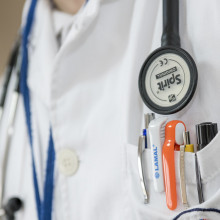
01:04 - Sepsis alert saves lives in hospital
Sepsis alert saves lives in hospital
Kate Honeyford, Imperial College London
Increasingly, hospitals around the world are replacing paper-based notes in favour of electronic medical record systems. As well as the advantages of being able to better read what doctors have written, these computer-based systems can also spot subtle trends in the data being stored indicating that a patient could be about to deteriorate. And it can do this sooner than a human, and sound the alarm. Kate Honeyford has been looking at the results from a healthcare trust in London, and she spoke to Chris Smith...
Kate - When the hospital trust adopted an electronic health record system, they had the opportunity to introduce a sepsis alert, and we were analysing whether the introduction of that alert improves the outcomes for patients. Sepsis is an overwhelming and life threatening response to infection. So some people might have heard of blood poisoning or septicaemia, and that's when the bacteria are in the blood, and that can develop into sepsis, which is this overwhelming response.
Chris - And how might the electronic patient record spot when a person's at risk of that happening?
Kate - So it can pick up on the normal signs of infection, like a high or low temperature, changes in blood pressure and heart rate. But it can also look at blood test results in the system. And then, using a formula, it can determine whether or not a patient is at risk of developing sepsis.
Chris - Okay. So talk me through the actual methodology. What did you do, what did you measure, and what did you find?
Kate - So the trust switched the alert from a silent running period, which was just kind of ticking over in the data, to a live period where clinicians could see it. And that meant we could analyse the data as something called a 'natural experiment', which makes statisticians really happy. So that was the first part of our methodology.
Chris - So in other words, you had data collected before the system went live and you could see what was happening to people. Then you've got the system going live, it's alerting clinicians and you can ask how did they change their behaviour, and presumably you can compare mortality, or how ill people are when the clinicians are not being alerted before it goes live, with afterwards to see if you're making a difference.
Kate - Yes. So what we found was a 35% increase in the chance of receiving antibiotics within an hour, when the alert was live and a 24% lower odds of death for the same group of patients.
Chris - How do you ascribe that benefit to the alert though? How do you know that wasn't just happening by chance?
Kate - Well, we're fairly confident it wasn't happening by chance because we used statistical methodology, which takes into account differences in patient characteristics in the two groups of patients.
Chris - The thing with these alerts though is that doesn't it still rely on some proactivity on the part of the doctor to go and check on that patient's records to see the alert? It's not like a bleep going off; "Oh dear, bed thirteen's in trouble. You better go and review them."
Kate - Yeah, that is true. However, it also alerts to nurses, so nurses, if they're plugged into the system, if they're in their computer, the alert will fire and they then can contact the doctors to come and have a look at the patient.
Chris - Given that this really costs nothing to implement, because we're already collecting all of the data that's being used by the system, it's merely just crunching it together and generating an outcome that can be made known to medical staff. It begs the question, what's not to like?
Kate - I think what's not to like is that if you have too many alerts in a system, people will become desensitised to the alerts. So if you have lots of alerts, people won't know which one to respond to and how to deal with it. So all organisations need to be quite careful in deciding, well, which alerts are going to have the most impact on patient outcomes.
Chris - Do you think that the sensitivity and the specificity of these sorts of measures could be improved as we learn more about other things we can monitor, so if we bring more things to the party, we look at more parameters about the patient, that actually the sensitivity will go up and that problem goes away with over calling the alerts.
Kate - Yeah, definitely, we need to make the patient history much more part of the thresholds within the alert, without question, that is the next stage of what we're looking at.
Chris - And are we in position to do that with these new electronic patient records systems that are increasingly being implemented and with good reason, across the UK and elsewhere?
Kate - Yes. The technology is there. It's just a question of refining the alerts, and refining the clinical input into them to make sure that that is what happens. Because what we don't want is patients to be missed because it's not working quite as we expect it to.
Chris - And, at the end of the day, this all comes down to money. These computer platforms are not cheap. A big hospital will spend money running into hundreds of millions on these systems. Does this translate into a saving, ultimately?
Kate - So length of stay has been shown to be reduced by the introduction of alerts like these, but also with an era of antibiotic stewardship, where we're trying to only use antibiotics when we absolutely need to, coupling the alert with antibiotic guidelines, with treatment plans, can actually improve the use of medication. So we may not see a financial cost saving straight away, but we may see improved uses of antibiotics and other medications.

06:31 - Turning carbon dioxide into ethylene
Turning carbon dioxide into ethylene
Ted Sargent, Toronto University
A technique that can turn waste carbon dioxide into ethylene - the high-value gas used to make polythene and a range of other products - has been unveiled by scientists in Canada. The system uses a clever, new, inexpensive copper-based catalyst that can selectively grab - and align - carbon dioxide molecules so that they react together - and with water - to make pure ethylene. Previously, the main industrial source of ethylene was oil, so this new approach has the potential to cut CO2 emissions, and reduce oil consumption. Toronto University’s Ted Sargent took Chris Smith through the new process...
Ted - We've got a system that eats carbon dioxide, so it consumes CO2. It also uses renewable energy, so energy from a solar cell or a wind farm, and it uses those two ingredients to produce ethylene, which is a major commodity chemical.
Chris - And that's the stuff we turn into polyethylene, otherwise known as polythene?
Ted - That's right. So this is a big global industry. It's about a $60 billion industry and it's got a major carbon footprint today. And people have become very interested in capturing CO2 and sequestering it. But the problem there is that you don't get value out of it. You just sort of bury it underground. And so there's a whole community - ourselves included - that has been trying to figure out ways to upgrade or utilise CO2 into a valuable product, to generate a pull on consuming and utilising CO2.
Chris - The problem here is, in chemistry, when we burn stuff that's got carbon in it, we release energy, and the waste product is CO2 - carbon dioxide - which we throw away, and the planet's been a convenient place to put that up until now. So, in order to get something useful back out of the CO2, you've got to do some work. And, hitherto, it's been very difficult to make these equations actually stack up in a financially viable way, that it was worth doing. So how have you solved this?
Ted - So in order to make something valuable, you also need to make it in a fairly pure form. Previously, we and other groups had made what are called heterogeneous catalysts. So these are basically pieces of metal, and on the metal, the carbon dioxide and the electrons from the electricity land, they mix up with water. And there the reaction occurs to produce the ethylene. What we found was that some brilliant scholars who became our collaborators from Caltech had come up with a way to put molecules onto a catalyst, where the molecules kind of made the carbon dioxide that you were trying to react with, stand up in a special and controlled way onto the catalyst. It allowed us to control the orientation of the carbon dioxide, so that we could then turn it selectively into ethylene. So when the reaction proceeds, two carbon dioxides end up coupled together, they form this two carbon molecule ethylene, and then we simply collect the gas that mixes with the water that's involved in the reaction.
Chris - And how does the whole catalytic process work? Do you feed in carbon dioxide gas?
Ted - Yep. So we feed in CO2. It interacts with the catalyst, and it does so right at the same place that there's water. And water's providing the hydrogen to produce these hydrocarbons.
Chris - And how fast is this? Is this actually viable? Because some of these catalysts, they turn something that happens excrutiatingly slowly into something that happens a little bit less excruciatingly slowly, but it's not industrially viable. So is your process fast?
Ted - So there's one measure that we use in this field to describe the activity or the speed of the reaction and it's a current density. I'll just give you a sense of what it was previously using these molecules, it was about 1 milliamp per square centimetre. Now we built a system in this project that's designed to work at industrial productivities, and most people in industry will agree that you need to get to about a hundred milliamp per square centimetre in order to have an industrially interesting process. We managed to get above 200 milliamps, so we achieve more than a factor of a hundred increase. And we did get into the range of industrial interest.
Chris - So would it be feasible to couple something like this up to the flue stream from say, a big power plant, And deal with what a coal fired power station, 30,000 tons of CO2 in an afternoon might chuck out?
Ted - So there's a lot of additional work we need to do on scaling, but we've done the calculations, and we know how much CO2 comes out of say, a steel plant or out of a cement factory. We know how much electricity is available and we also need to supply the water. That's actually the most straight forward of those three feeds, and it should be possible to couple these altogether. And we believe that with a bit more progress on the energy efficiency of our system, it will even become economically compelling to make ethylene that is renewable ethylene instead of fossil ethylene.
Chris - So you've effectively got carbon neutral plastic?
Ted - That's right. You end up actually taking CO2 that would otherwise have been emmitted and you sequester it into the plastic product.

13:04 - Genes to resist ash dieback
Genes to resist ash dieback
Richard Nichols, QMUL
In 2012, the first cases of a fungal disease - dubbed “ash dieback” - that was wiping out ash trees across Europe were detected in the UK, probably after the fungus hitched a ride here on infected imported plants. The disease spreads when fungal spores blow from an infected tree onto an uninfected specimen, which they invade. Luckily, the disease is not universally fatal, and about 5% of ash trees carry genes that mean they’re naturally resistant to the infection. To find out what those genes are, UK scientists have compared the DNA sequences of susceptible and more resilient ash trees. And this has enabled them to come up with a way to spot the trees not to fell and that are best suited for breeding programmes to repopulate forests. Amalia Thomas reports...
Amalia - Ash trees are one of the most common types of trees in the UK and they are under serious threat of being wiped out by a fungal disease called ash dieback, which was introduced from Europe in 2012. There is to this day, no cure to this disease once the tree is affected, but curiously a small portion of our Ash trees are immune to dieback and in a recent study, scientists from Queen Mary University London and from the Royal Botanic Gardens in Kew found out why. I spoke with one of the authors of the study, Richard Nichols, who explained their results.
Richard - We found that the trees that survived were genetically distinct from the trees that died from ash dieback. We found evidence, not that there's a single gene involved in resistance, but genes spread all across the chromosomes. Hundreds, perhaps thousands of genes, each with a small effect contributing to the resilience of some trees.
Amalia - To put things in perspective, Richard explains the devastating effects of this disease on the UK's ash tree population.
Richard - When the disease arrives, it's catastrophic. Around about 70% of the ash trees in a woodland will die. That includes the well-established mature trees, so across the country that amounts to about 70 million trees. A major component of our woodland.
Amalia - Their study into how to stop ash dieback was based on samples collected by forest research.
Richard - There was a mass screening trial, that means 150,000 trees have been planted out in various locations around the South of Britain, and we went and found the worst effected trees and the relatively unaffected trees. All in all, we took a thousand samples.
Amalia - And from these samples they were able to extract genetic information from their DNA.
Richard - We had a whole series of millions of reads from trees which had been affected and another series of reads, which we knew had come from trees which were unaffected, and we compared the two to look for differences. So a lot of the differences that we've found may be spurious differences because there are so many variations in the genetic code. But if we look across all of the chromosomes in an ash tree, even if nothing was going on genetically, we would be bound to find some differences just by chance between the diseased trees and those which are relatively unaffected. But when we looked at those genes which had the largest, most impressive differences, they did seem to make sense. They did seem to be genes which in other species have been found to be associated with disease resistance.
Amalia - So from a small piece of an ashtree, Richard and his team are able to predict whether or not it will be susceptible to ash dieback.
Richard - What we do is we create a score. We look at the trees and say, well, of our suspect genes, the genes that we think might be involved, how many is this tree got? And then we look to see how well the tree performed. And when we did that, we found we got remarkably accurate predictions. So when a tree had a really high score, then with 80% probability it was one of the more resilient trees.
Amalia - Identifying which trees are resilient to ash dieback is a huge step forward in the battle of conservation of the ash tree population and the ecosystems they sustain, which are so significant in the UK.
Richard - What we want to be able to do is to breed trees which will be useful to to repopulate woodlands which will be resilient to the disease and we can use the genetic information to do that, and the second thing we would like to be able to do is go to a woodland which has been infected and identify the trees which are going to do relatively well because we don't want to cut down all the trees. If some trees are going to do well and would be good to re-seed the woodland. We want to be able to identify those and not to cut them down.
Richard - This is a really important example of why our conservation efforts should maintain large, diverse populations, because if our ash trees had been just one cultivar which was planted all over the country, we wouldn't have this natural reservoir of resilience.
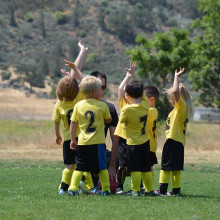
18:31 - 80 percent of kids don't get enough exercise
80 percent of kids don't get enough exercise
Christof Schwiening, Cambridge University
A new report from the World Health Organisation has found that up to 80% of children worldwide are not getting enough exercise, and in some countries that number can be as high as 97%. So what is the impact of this? Chris Smith spoke to Cambridge University physiologist Christof Schwiening. First, Chris asked, why is this important?
Christof - Well for a whole number of reasons, but first, let's make it clear - this is one hour of moderate to intense activity in total that is required for adolescents. So as you say, 80% not meeting that target.
Chris - Is that per week?
Christof - Per day. So one hour per day. I must say that adults are not meeting their target either. About 80% of those are not managing their two and a half hours of exercise a week. Children are not unique and of course without exercise you lose capacity to be able to do further exercise or even sustain life in the future. If you exercise less, then you become capable of doing less as time progresses.
Chris - Presumably it's not just about capacity though? It's presumably also to do with your ability to fend off ill health?
Christof - Oh yeah, absolutely. So with ill health comes lots of stresses. So there's cardiovascular stress associated with ill health and gradual dehydration, and exercise is very good at helping to support that. Or you've got things like muscle mass as well, and muscle mass of course, muscle stores carbohydrate, and that's important as well if you're ill. There's bone density, there's hormonal capacity as well, which gradually decreases if you don't exercise. And then the other critical aspect, sometimes overlooked, is the mental health aspect of getting out and doing a regular exercise bout, especially outside, and that's very important to mental health.
Chris - So this is really signalling alarm bells isn't it, that so few children are probably meeting those requirements? Why do you think that is?
Christof - I think there's a whole host of reasons why children are not exercising enough. Partly they're taking their lead from the adults around them and they're not doing enough exercise either, but it's so easy to not do exercise if you have all of these labour saving devices and now we're seeing lots of these electric scooters around as well. There's not even a need really to cycle a bike to school. It's so easy to sit in a nicely heated room with an electronic device chatting to your friends there rather than going out and actually meeting them.
Adam - So what defines active? What is the threshold? Is it not like, because us scooting around our office on our wheelie chairs, that doesn't count. So what does?
Christof - This is the whole problem and this is why there's been a gradual shift from things like doing 10,000 steps a day to this one hour worth of activity and it's really scientifically a spectrum, in that you can do lots of very low level activity. Scooting around on the chair - if you are doing it absolutely all day and relatively actively, isn't that bad, but you can shorten the amount of time that you need to exercise for you, if make it gradually more intense. And this is actually a public communication problem, because it starts to get complicated if you start to draw out an equation of the intensity versus time relationships. So we have simple statistics, like one hour of moderate to intense activity a day. That's good.
Chris - One person I know tried to argue that they could count several glasses of wine towards their five a day because they are made from something that had fruit in it. We had to disabuse them of that notion.
Christof - It's one of the five a day.
Chris - What might be the long term consequences if we do carry on going this way, what's going to be the outcome?
Christof - The outcome really is a problem with early mortality and it is a problem of disease states, growing levels of type two diabetes. Growing levels of inactivity lead to a whole range of mobility problems as well. So it's not looking good.
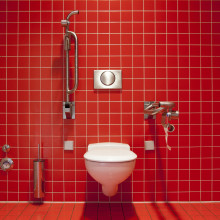
22:38 - Water-saving toilet coating
Water-saving toilet coating
Tak-Sing Wong, Penn State University
Researchers at America’s Penn State University have found a way to dramatically cut the water use of the average toilet, by making the pan super-slippery. This means much less water is needed to flush them and dislodge anything sitting in the bowl. The new treatment, which can be applied to existing as well as new toilets, comprises two layers. The first causes lots of tiny hairs, called nano-hairs, to grow on the bowl like 5 o'clock shadow. These nano-hairs are strongly hydrophobic- they repel water. But to make the bowl even more slippery, a second silicone-based layer is added on top, which should make skid marks impossible, as Adam Murphy heard from the product’s creator Tak-Sing Wong, starting with the nano-hair layer...
Tak-Sing - The nanohair is about one nanometre thick. So you're talking about... it's about a hundred thousand times thinner than the diameter of a human hair. And the way we put this coating on is simply by spray coating. You spray the first part of the coating, which forms the nanohair that is permanently bonded to the toilet surface, and then the second part is spraying a lubricant, and then that completes the process. The whole process only takes within five minutes and you can do it at room temperature.
Adam - What are they made of then to let them grow?
Tak-Sing - Yeah, so the nanohair is made of silicon, it's silicon nanofibres. And the lubricant is also a silicon oil. So you have this solid silicon nanohair infused with silicon oil.
Adam - So they both work together. But how good are they each on their own? Or do they both need to be together to function at all?
Tak-Sing - So with just the nanohair alone it's already fairly liquid-repellant, and can also reduce the adhesion from sticky substances by 70% compared to an untreated surface. With the lubricant, with the silicon oil lubricant, it further enhances the slippery function and can reduce the adhesion by up to 90% of sticky substance compared to our untreated surface.
Adam - And how long do they last, or will you need to be replacing them frequently?
Tak-Sing - For the first layer of the nanohair, that is permanently bonded to the toilet surface, or glass surface. So that you don't need to reapply or replenish. But for the second layer, that is the lubricant which is infused into the nanohair, you have to reapply it from time to time depending on the use case and the frequency of use.
Adam - And the hairs underneath the lubricant- how robust are they? How much punishment do they stand up to?
Tak-Sing - They are very robust. These nanohairs are bonded to the surface through this interaction called covalent bonding. It's among the strongest bonding you can get in nature. And we have done a laboratory test, we use sandpaper to rub against the toilet surfaces, and what we find is that you can't removed this nanohair even after 300 rubbing cycles from the sandpaper. So they are very mechanically robust.
Adam - And why would you want to go about making a super-slippery coating for a toilet? What's the purpose in doing this?
Tak-Sing - If the coated surfaces can prevent adhesion from human waste, first it will look better, and without a human fecal streak on the surfaces it can prevent the bad smell, the unpleasant odour, and also it can reduce bacterial accumulation. So that is more on the health aspect. Another aspect is the actual water saving. Take the toilet in the United States as an example- a typical toilet, we use about 1.6 gallons per flush, or equivalent to six litres per flush. 50% of this fresh water is required to transport human waste through the drain line and the sewage system. But the other 50% of the water, most of the time, you actually use it to clean off or rinse off the surface.
Now imagine if the surface is super non-sticking to human waste. You do not need that 50% of water to clean the surface. So you save that part of the water. And when you think about that, we have probably over a billion flushing toilets or urinals in the world. And if you add up the amount of water that we can save, that's a signifiicant amount of water.
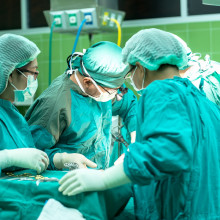
What is organ donation?
Here's Amalia Thomas with the quick fire science on organ donation...
On 17th December 1986, at the Papworth Hospital in Cambridge, something rather amazing happened. Davina Thompson became the first person to have a heart, liver and lung transplant, after an operation requiring 7 hours and 15 people. She would go on to live another 12 years.
So how does organ donation work? If you were somehow, to get very sick, you might need to an organ transplant. That involves taking an organ from a donor, and putting it in you, so the healthy organ can take over the job of the damaged one. We hear about it a lot these days and it’s a pretty common procedure, but donating whole organs from one person to another is a procedure that’s only about 60 years old. The first one was done in 1954 when Richard Herrick, an American naval officer was given a kidney by his identical twin brother Ronald.
It worked well for those two because they were identical twins, so Richard’s body didn’t really notice the difference between the old organ and the new one, except that the new one worked. But two people who aren’t so close have different genes. The immune system is then able to notice the difference and will attack the new organ, because as far as it’s concerned, it doesn’t belong there. This will happen if the blood types aren’t compatible as well.
This is called organ rejection. Organ rejection can happen quickly, just one week after the transplant. If it’s not seen to, it’s life-threatening. There are things that can be done to minimise this. For starters, the closer genetically two people are, if they’re siblings, or parents, the more similar their genetics are going to be. Maybe close enough that it won’t bother the immune system of the person receiving the organ.
The other thing you could do is quiet down the immune system. There are several drugs that can be used to make the immune system a little less aggressive, b these drugs all come with their own side effects.
These days we can transplant a whole range of organs; kidneys, heart, lungs, liver, and those people see a better quality of life for years. Think of what we might be able to do in the future!
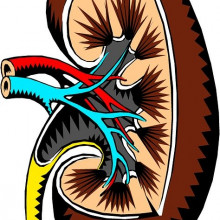
32:25 - Making mini kidneys
Making mini kidneys
Jamie Davies, Edinburgh University
One of the organs in high demand is the kidney. Here's Phil Sansom with the quick fire science...
Kidney transplants are in especially high demand in the UK. The wait time is between two and a half to three years. The most common reason for them is kidney failure, where the kidneys no longer filter waste products out of your blood. This is most commonly a consequence of poorly controlled diabetes and high blood pressure. Dialysis can help. It involves three, four hour sessions a week connected to a machine that takes over the role of the kidneys, removing waste from the blood. But dialysis places a strain on your body over time and people can die on dialysis if they don't eventually get a kidney transplant. Most people who need the kidney transplant are capable of having one no matter how old they are. But there are some reasons it might not be safe or effective. Like if you have an ongoing infection that needs to be treated first or heart disease or cancer that is spread to multiple places in your body or AIDS.
Jamie Davies from Edinburgh University is working on growing new “mini kidneys” in his lab. Chris Smith asked him how he's trying to tackle the donor kidney shortage...
Jamie - Well, we're tackling it by trying to turn stem cells into kidneys. So these are cells that we can make from patients and we can turn the cells back into an embryonic state and then try to walk them forward in the same kind of path they would have taken when a baby forms in the womb, the part of the baby that will form the kidney. We try to walk these stem cells through the same sequence of events so that they want to form a kidney.
Chris - And the benefits of doing that, presumably Jamie, if you do it with a person's own stem cells, is that they end up with tissue which is genetically matched to them. So we don't have one of the problems, which is an issue with organ transplantation, which is finding a match.
Jamie - Yes, exactly. And that's very important. People who have transplanted organs in the number of pills they have to take a day is quite phenomenal just to control immune rejection. So yes, that does help a lot. So we can take these cells out into culture dishes and use their own ability to organize themselves to make very small versions of the kind of organs that we want to make, in our case, the kidney.
Chris - How do you do it?
Jamie - Well actually it's the cells that do all of the clever stuff and this is the remarkable thing about this that what we have to do is to provide conditions for the cells that seem to the cells like being inside an embryo and then they're capable at least of making the small anatomical structures of the kidney on their own. And we just have to sit back and watch, which is amazing. What they can't do is make the broad scale anatomy of the kidneys. So for example, they can make all of the detailed little pipes that are found in the kidney, but the broad arrangement of pipes, they can't do it. It's a little bit like being able to make a street but not being able to have these streets organized like a proper city that you want. We now know a little bit about how to get the broad organization and again, it's going back to the embryo and it's mimicking signals that come from adjacent spaces in the embryo. And when we find we get the mimicking right, then we start to get this very large scale anatomy starting to form properly. We haven't formed a full size kidney yet. The best we can do is only a few millimeters across, but it's still quite exciting to see those forming.
Chris - And when you look at your miniature kidney, a few millimeters across, is it a miniature version of the whole thing or have you got very good at making just one part because the kidney is a collection of things. You use the analogy of a street just now. Well, if I could build on that. So we've got houses, we've got roads, but also there are water mains, there are electricity supplies, the internet comes in so you can watch Netflix and other rival stations, etcetera. Have you got all of that being reproduced and recapitulated in your mini kidneys?
Jamie - We have all of the parts that carry urine in the kidney. The kidney makes urine from blood by cleaning up the blood. What we're now struggling to do is to get the blood system into the kidney in the right place. One of the things which is a problem to us is that the way that kidneys work, the blood vessels have to have a very, very special arrangement. And although we can get a kind of random hodgepodge of blood vessels and into our kidneys perfectly well, we are at the moment struggling with finding ways to get the arrangement exactly right.
Chris - Do you know why?
Jamie - Well, we know from going back to the embryo again, because we have this cycle of of doing some tissue engineering, getting stuck, going back to the embryo and asking better questions about what the embryo does, and then going back to the engineering. We, again, we understand that this is to do with asymmetries in the embryo and a special environment where the blood vessels come in. So we've published a whole series of papers about normal blood development where some students have been discovering new things. And what we're now having to do, working with engineers, is to work out how to create that special environment in a culture dish.
Chris - How would one apply what it is you've discovered? Would it be that you would say, I'm now going to grow a whole new kidney for someone who's got kidney failure? Or could you go down the road of saying, well, we're going to do some in-situ repair, because rather than build a whole new road, we keep returning to housing estates and houses here, don't we? But rather than build a whole new road, I can fill in potholes and I can make the road a much smoother ride. So which is it? Or can you do both?
Jamie - I think we can do both. We had originally imagined we would have to build the entire new kidney, and I suppose that's still our main aim, but very recent work, which we've not yet published, so this is, this is kind of in a provisional and not yet checked by peer review, but we found that these new kidneys can hook up to existing kidney tissue. You know, that's given us, at least it's given us a new direction to do our research. We've got a lot more to do before we can properly nail that down and say yes, we're absolutely sure. But it's meant that both strategies are now alive.
Chris - So you may be able to take someone who's got, say, a shrunk and not very healthy kidney and refresh it by putting new cells in which will then organize themselves into healthy functional tissue inside that kidney and restore its function.
Jamie - That would be exactly one of the ways of doing this. The other thing as well in our aim for making whole organs which is the first tree we were doing this is, we may not need to make something at the whole scale of an adult organ. Other scientists have been working showing that it's possible to transplant fetal kidneys into animals and have them grow up and take on function, and that's given us some hope that actually we only need to make a really good copy of a fetal kidney and that might be enough because a lot of kidney diseases are slow. You have a lot of time before knowing that a patient is starting to suffer kidney disease to the point that she might need a transplant.
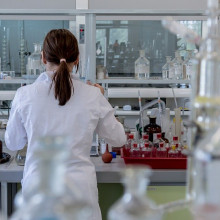
38:60 - Keeping cells alive
Keeping cells alive
Mark Skylarr-Scott, Wyss Institute
One of the big challenges with making and sustaining organs in the lab is plumbing- getting nutrients in, and waste out. This is the job of the vascular system, that carries blood around the body and is vital to keeping tissues alive. Mark Skylarr-Scott and his colleagues at the Wyss Institute for Biologically Inspired Engineering at Harvard University have recently come up with a new technique for 3D printing large, vascularized human organ building blocks. The technique lays down tracks for blood vessels between clumps of cells to help keep tissues nourished. Using this method, they’ve managed to keep clumps of heart cells alive for weeks, which would previously have been almost impossible. Mark took Katie Haylor through the process...
Mark - Step one would be prepare approximately one cup of stem cells. In a lab that involves using something called a bio-reactor to generate vast numbers of stem cells in three dimensions. We then need to instruct those cells to become heart cells. So we put the correct ingredients into this bio-reactor so that they are able to develop into a heart cell.
Mark - So stem cells, and then we provide chemicals that make the stem cells think that they're supposed to develop into beating heart cells. You know, this is a fairly standard process up to this point. And now if we have hundreds of millions of heart cells, a heart isn't a hundred million cells floating around in a bio-reactor. It's actually a solid organ that beats and you know, pumps out blood. We now need to think of a way to compile these together into a tissue.
Mark - So then step two, so we now have hundreds of millions of cells. At the moment, little pieces of tissue. So we actually, they're not single cells, they are in little clumps, about half a millimeter across. If we now take these little clumps and we put them in a centrifuge, we are able to sort of push them all together. We spin them down, they form, a little pellet of cells. Cool it on ice, so it's now at zero degrees.
Mark - We then come with a 3D printer and inject gelatin - solid at room temperature and liquid when it's 37 degrees - in three dimensions into this group of cellular aggregates. Now, if this material were liquid, the gelatin would just sink and I wouldn't be able to create a 3D structure. If the material, if my cells were too solid, I would essentially be carving it like a turkey as I come in with a nozzle and 3D printer and inject gelatin in 3D. And this would also break the tissue. But because these cells are halfway between a liquid and a solid, I'm actually able to come in and lay material, this gelatin material in three dimensions, and it will hold in place so that when I now raise the temperature, my cells all stick together. So now my tissue is become solid-like, and the gelatin that I printed melts and becomes liquid-like. If I now flush that gelatin out, I'm left with space. I'm left with channels that I can now connect a pump to those channels and actually keep the tissue alive, keep it perfused and viable.
Katie - So it's a bit like a Goldilocks porridge situation. And how does this compare to how a full scale heart would be vascularized?
Mark - This is very different in terms of the process of how we develop, but this is obviously because the goal of creating an organ for transplantation, you can't wait, you know, 20 years for an adult heart to develop, we need to be able to manufacture it quickly. So the process is very different.
Mark - In terms of the architecture, we similarly have blood vessels in our body and in our organ that start very large. The aorta comes from the heart and then it splits and it splits and you're down to what's called arterioles, little arteries. And then the arterioles become capillaries. And then the capillaries rejoin to form veins and then larger veins. So this hierarchical arrangement of blood vessels we're able to reproduce, with a 3D printer - not necessarily at the resolution of capillaries, but certainly in terms of having these branched hierarchical networks.
Mark - This is actually important for transplantation. If a surgeon wants to be able to connect tissue to the patient, they don't want to have a hundred different tubes that they need to suture to connect to be able to feed that tissue. They want a single inlet that will then split, you know, and feed the full volume of the tissue and then a single outlet that they can plumb into.
Mark - I'd say the advantage of our method here is these organoids that are being developed, they really leverage biology's natural ability to make complex structures on their own. The instructions for generating the sort of patterns that you see in organs, of course, it's in our DNA. Organoid protocols, they take advantage of that to form these tissues that can exhibit amazingly complicated architectures that self assemble. They develop on their own for free essentially. So because at the smallest scale we have all of these structures already in place in the organoids, if we can now compile hundreds of thousands of these organoids together into a larger tissue that we can keep alive, we hope that through 3D printing, we get the large scale structures and vasculature necessary to keep it alive, but through developmental biology and the fact that the stem cell derived organoids that have all the microstructure already present, that we get the small scale structure in place as well.
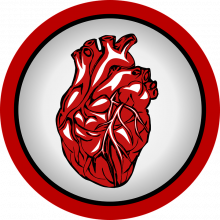
45:49 - 3D printing a mini heart
3D printing a mini heart
Steven Morris, BioLife4D
Cells in dishes are one thing, but how close is science to growing a whole new, fully functional organ like a heart? Before we hear about this, here's Phil Sansom with another quick fire science...
Last year there were seven and a half thousand heart transplants across the world. Each of those hearts went to someone whose own heart was failing and for whom all other treatments had failed. These people who received a transplant are the lucky ones because cardiovascular disease is the number one cause of death globally, meaning there are millions of people who die of heart failure without any prospect of a transplant.
Most of those are older people because if you're over 65, other health problems like diabetes or lung disease can render a transplant impossible. However, many people who are good candidates still die waiting for a transplant. Last year in the UK, about 200 people got heart transplants, but almost 300 were still on the waiting list. While someone's on that waiting list, they might be kept alive by a ventricular assist device, a mechanical pump in their chest that helps pump blood around their body. Then even if they do finally get a heart transplant, that is a major operation with potentially life threatening complications. And you're not guaranteed a long life after the transplant, only about 50% of people live for another decade afterwards.
One US biotech company - BioLife4D - have just announced they’ve bioprinted a mini human heart. Steven Morris, CEO of BioLife4D, spoke to Chris Smith...
Steven - We've been able to bioengineer, bioprint what we call our mini heart. So what our mini heart is really about a cherry-size version of a human heart, scaled down, with all of the different components; valves, atriums chambers, things like that. So it's actually more representative of an organ than your previous guest who was talking more about organoids, which are small groupings of cells.
Chris - Where do you get the cells from?
Steven - So what we would do is we would take a patient's own cells and basically reprogramme them to the different cell types that make up the heart and then use those to bioprint ultimately an organ viable for transplantation. For the mini heart though, you don't need to have a patient's own cells because it's not designed to be implanted back into a human. It's a little bit lower of a bar than the complexity and the functionality of an organ to keep an animal alive for the longterm.
Steven - The mini heart is really designed for pharmaceutical testing and drug discovery testing, to give a better predictive model to test the potential cardiotoxic effects of whatever it is, therapies, that they're working on.
Chris - And how do you actually do the bioprinting?
Steven - It's an incredible process. We'd start out with white blood cells and then we literally reprogramme them into induced adult stem cells. And then once we do that, we reprogramme them again into the different cell types that make up the heart. So there's cardiomyocyte cells that beat and different cells that make up the structure of the heart and the different components of the heart. And once we've been able to reprogramme enough of each of those cells, we put them in what we call our bio-ink, like little balls of hydro gel. And in that hydro-gel, you have the cells as well as nutrients, growth factors and other secret sauce that we put in there in order to keep everything viable for the 3D bioprinting process.
Steven - We load that into a bio-printer, and then what we do is we literally bioprint an organ, our heart. So layer by layer 3D bioprinting is very similar to normal 3D printing, but normal 3D printing, you melt one layer to another. You can't do that with cells or you'll kill the cells. So what we do is we place all of the cells in the appropriate place as we're constructing the heart. And then we also lay down what we call scaffolding. So material to hold everything in place, because the cells have not self assembled yet. And after a couple of days, the cells all self assemble, form networks and join together and then we are able to melt away that scaffolding and be left with the organ.
Chris - Does it work though? That's the crucial question. Can you actually get this thing pumping blood?
Steven - We have not got it to the point where it's pumping blood. That's what our next milestone is. You know, we're well on our way towards doing that, so we're now capable of printing all of the different components of the heart separately, the valves and the chambers and even vascularization and things like that. But when we're laying it down layer by layer, it's not like a normal crossword puzzle where you take the pieces and just plug them in. We have to be printing layers of each of those different components at a time. So even though we're able to print these functional components, we have not bee n able to get them together in this construct so that they're fully functional.

51:04 - New liver cells to treat disease
New liver cells to treat disease
David Hay, Edinburgh University
Another organ high up the list in terms of transplant need is the liver. Here's Phil Sansom with a quick fire science...
Why might you need a liver transplant? It's a last ditch measure for either chronic liver diseases like cirrhosis, caused by long term alcohol abuse, or acute liver damage caused by overdoses of drugs like paracetamol and infections with some hepatitis viruses. Either way, it's a more common form of transplant. Last year there were 25,000 of them globally and they're generally very successful. Most people are eventually able to return to their normal activities afterwards, but it can take a year or more to fully recover and like other transplants, you'll need to take immunosuppressant medicines to stop your body attacking the new liver for the rest of your life.
David Hay from Edinburgh University has implanted lab-grown liver cells into mice with a serious liver problem due to the body not being able to process the amino acid tyrosine, and has since got them off medication, with in-tact immune systems. David told Adam Murphy about his work, explaining firstly why these mice needed new livers...
David - So these mice need new livers because as you said, they can't fully process the amino acid tyrosine and it leads to a build up of toxic products, which damage a number of different organs in the mice. So what we've done is use this as a test model to assess how good our liver tissue, that we produc in the laboratory, is in an InVivo setting in the mouse. And what we've done is, we've implanted this tissue underneath the skin of mice. So this is a piece of liver tissue which is operating a distinct site from the host's own liver and it's been able to support the mice when their medicine has been removed for at least 14 days in our experimental procedures, providing proof of concept that this is a viable approach to supporting failing liver function in mammals.
Adam - How do you get this liver tissue to implant in the first place?
David - What we do is we've been working with engineers at Edinburgh and we've been using a non woven fabric and putting our liver spheres and top of this fabric and then putting these underneath the skin of mice, so a very simple procedure to deliver tissue underneath the skin and then this tissue becomes vascularized. So it connects with the recipient circulation. And what we saw in those experiments was that the amino acid tyrosine could now be processed in the absence of medication - truly processed, so it wasn't toxic to the individual.
Adam - And what could this potentially mean for humans who have liver problems?
David - That's what we're trying to develop now, moving towards the clinic with this work, because we're trying to generate the liver implant that we could give to patients to support them when their liver is failing. Now this could be in the case someone who has an underlying liver disease and has a short period of decompensation where the liver doesn't function at a level which is consistent with good health. So what we're looking to do is use that as our test bed, really, for assessing how good the technology is. Is it safe to use? Is it efficacious? And will it make a difference to patients who may not have other treatment options?
Adam - So how do you go about doing that, then? How do you take a tiny little thing that can go on a mouse and size it up to something that can go on a person?
David - That's a very good question and that's something we're focusing on at the moment. So what we've done with our basic prototype is now moved us onto the next stage where we've semi-automated it and scaled up the amount of liver tissue that we can produce from stem cells, using the robotic setup at our center in Edinburgh. And the idea really is to produce tissue on mass that we can then use in the context of a human being, but also use this tissue as well to model at different aspects of liver disease in the dish. Maybe repurpose drugs, or test the safety of drugs too. So there's a number of different applications for this type of technology, and working at scale is paramount.
Chris- Can I just ask you a question, Dave, which was, I'm intrigued to know, when you make these little miniature livers, do they actually recapitulate the anatomy of a liver? Because if I took a piece of liver and I looked at it under a microscope and I looked at one of yours, would they look the same?
David - That's a good question. They wouldn't look the same. So what we are doing is producing three dimensional spheres and we have liver cells in there, so the main cell type of the liver called the hypothesize that performance most of the function and also endothelial cells, which forms the blood vessels. And what we're able to do is actually mix those at very early points in development in a dish. And then they self-assemble into these three-dimensional structures. So while we recapitulate certain aspects of the liver, we're not able to fully recapitulate the architecture of the liver at the moment. And that's something that we're looking at working with our engineering colleagues to provide, if you like, a template that guides this tissue formation in a dish.
Adam - So even though it doesn't look like a full liver, it still helps these mice out.
David - That's correct, yes. And importantly, it quickly connects to the host circulation, which is essential if we're going to provide liver support from an ectopic site.

56:43 - QotW: Is sea-level rise uniform worldwide?
QotW: Is sea-level rise uniform worldwide?
Nadeem Gabbani has been on the case...
Nadeem - Whilst this isn’t quite true for the islands mentioned, there is indeed a variation in sea level rise around the World, but the reasons behind this may not be what you expected. Dr. Rob Larter of the British Antarctic Survey breaks it down for us.
Rob -As the volume of water in the ocean increases, sea level does not rise uniformly everywhere, and in some places local sea level even goes down. There are three reasons for this. Firstly, some parts of Earth’s surface are being uplifted or subsiding due to geological processes.
Nadeem - This means that the height of ocean floors can change over large areas - causing the seawater above to either rise or sink with it.
Rob - Secondly, some areas that were beneath more extensive ice sheets during the last ice age, 20,000 years ago, were depressed under the great load of the ice and are still ‘rebounding’.
Nadeem - That is amazing. So as these massive amounts of ancient ice slowly disappear, the areas held beneath them begin to slowly move up again, and on top of that, you get more melted ice water returning to the oceans.
Rob - Finally, the ice sheets on Antarctica and Greenland are so massive, that they exert a significant gravitational attraction on the oceans around them. As they lose substantial amounts of ice, this gravitational force decreases so they become less effective in pulling ocean water towards them. This effect results in a smaller sea-level rise, or even a local sea-level fall, close to the ice sheets themselves and greater sea-level rise thousands of kilometres away.
Nadeem - So not only do the ice sheets contain a significant amount of water, their sheer size and mass actually helps keep global sea levels down. Although incredible, these processes highlight how global temperature change can affect sea levels, certainly something to think about.
Related Content
- Previous Glass half full
- Next Lakes, carbon and microbes: a hidden world





Comments
Add a comment